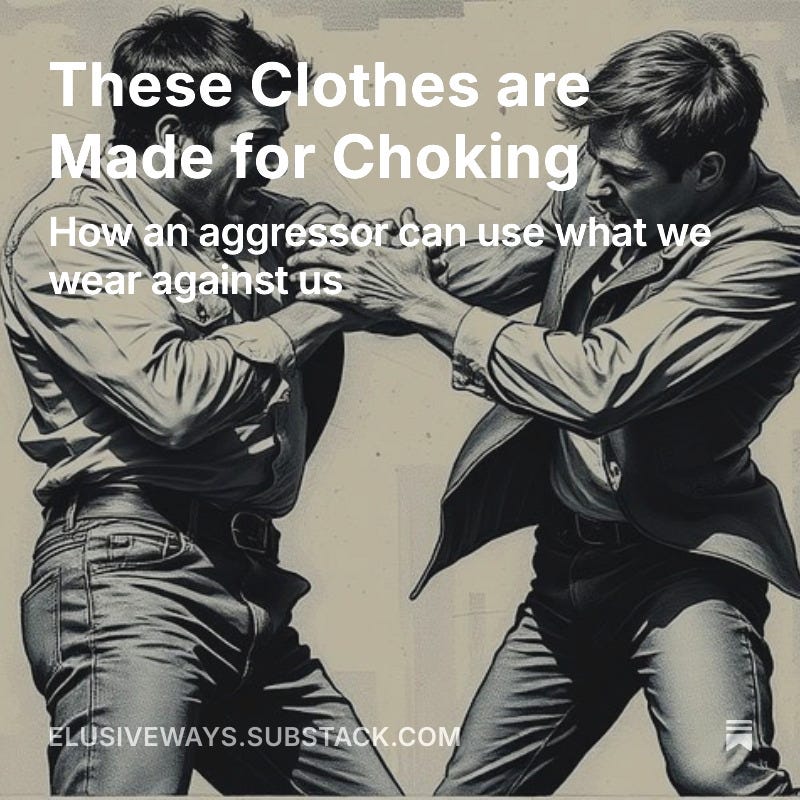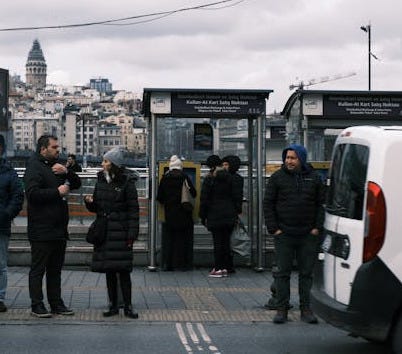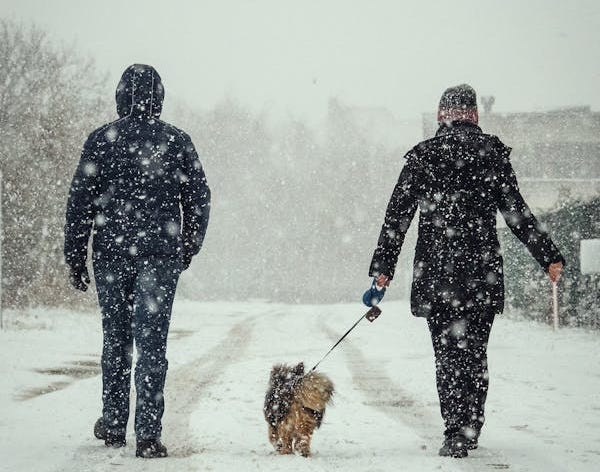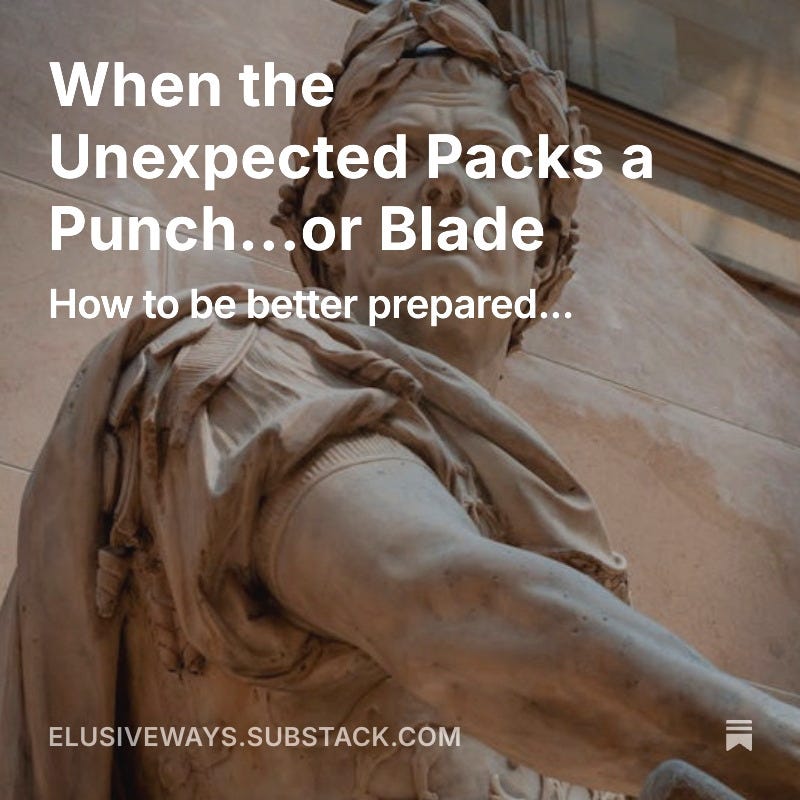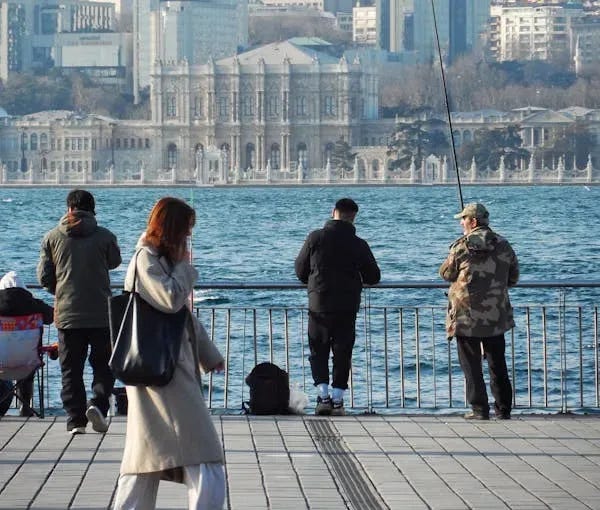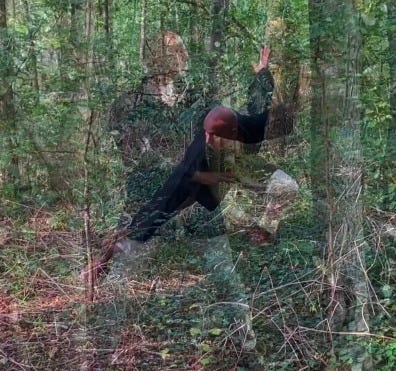Be Invisible...
Further insights on blending in, not being spotted by unwanted eyes, and moving with stealth.
Let's explore further ways of going unnoticed. The ability to blend in , conceal oneself or disengage from a place without attracting attention can be invaluable skills in the security field but it's also of great value to the traveller heading to a foreign destination. It’s useful for the high profile figure trying to avoid being disturbed, the individual who has to move through a high crime urban environment, and others. Concealment is of use to all of us, at some point.
In an earlier article - Grey, I already introduced this concept of urban disengagement and merging into an environment. Now whilst, my approach -Tri-Tier does put significant focus on physical protection skills- it does this because it offers numerous benefits, far beyond the realm of personal safety. It also puts a major emphasis on awareness and avoidance. This is the aspect that can help a person really reduce their chance of becoming a victim.
Even if someone does have very good physical survival skills, or is simply a formidable individual, should they come out of a situation that has regressed into a physical skirmish, unscathed and in better condition than the aggressors, there are still other potential consequences, from: legal entanglements, engagement with law enforcement ( in certain parts of the world, this in itself can carry risk), damage to professional reputation, unwanted exposure, and even further threats.
Make no mistake, I still carry the belief that the individual should take responsibility for their safety and should have knowledge of how to protect themselves, their loved ones, colleagues or even community.
We do live in a time, where there are these random terror attacks across Europe. Something that's also been mentioned in my articles on edged weapon survival. One could be exposed to a situation where the attackers are determined to strike red not gold; yet effective training could be used to prevent a loss of lives, that these cold blooded aggressors want to cause. Even here though, there may be ways to neutralise the attack before the opponent actually spots you.
When moving about outside...
Here, the key is to spot the potential threats, in advance. You can then move in a way that doesn't put you into their line of sight. This could be as simple as changing directions, taking an alternative route, or if you have to go past them, carrying yourself in a way where you fade into the wider setting.
Something I share on courses, is how to use meta movements or more pronounced gestures to be less easy to spot, when you are in fairly close proximity. There are also more specific actions that can divert attention or help one to slip away in more dynamic fashion.
Generally speaking, you want your body to be relaxed and your movement to flow. Whether you are changing direction or slipping into a building, your movement should be smooth and natural. Abrupt, tense or sudden awkward movement can trigger a person's startle reflex, causing their glance to then track the movement.
Sometimes, you can use crowds to help you fade out of their sight. You can even use this to remain undetected, when you just don't want to avoid engaging in a conversation with someone- maybe it's that annoying person who wants to simply encroach on your space or it's just not a good time to chat.
I recall various investigation jobs, where someone I know has walked past, someone on any other day I would love to chat to, but not at that moment based on the task at hand- so again adapting to the moment and blending in has been helpful.
When moving through an environment, you must study the rhythm and energy of the area. The way you walk can help you merge into the crowd, or move quickly through it, before those unwanted eyes clock you. Sometimes slow, gentle steps can be useful. Again, the key is to feel what is going on. This is not just about awareness; it also goes into the realm of intuition.
There are various walking drills that we can use to practise exploring different rhythms and paces- getting the practitioner used to moved naturally, in effortless fashion. Tense walking attracts attention and sometimes invites attention.
We can also talk about footwear and head wear, along with other fashion accessories that can help one to be less noticeable. Hats and scarfs certainly play a part in that they can hide your features.
At the same time if someone is following you, the hat or bag or distinct footwear can get one noticed. One also has to be awaress of those items of clothing that not only gets you noticed but also might invite muggers or street gangs.
Entering venues and exiting
I should point out that if someone is concerned that they are being followed then certain buildings such as department stores, shops or bars can be helpful for losing people. Stations also allow one to slip away. The key is to make sure you don't enter a space which is too secluded or you get boxed in, if their is the potential for aggression from the other party.
When you enter a venue such as a bar, cafe or public building, there are ways to enter whilst reducing attention, especially if you quickly grasp the internal layout. Again, one should enter smoothly. Float too long or hesitate by the entrance and you will get spotted.
If you are in a venue and spot someone you think is trouble, you can position yourself in such a way that you create blind spots or use a crowd as cover. Sometimes, you can engage with others in banter, to somewhat reduce your presence from other parties. Placement is key.
Also, there will be times when you may want to remain unseen but you don't want your desire for invisibility to compromise your visibility.
In some situations, for example, where a person feels they have a stalker or concerning presence around them; it may not be about being invisible but actually getting help to deter the other person.
There are some interesting ways to disengage from a place. Even the way you get up can help you avoid being spotted. Again though, it must be natural and not look awkward.
Sometimes, some commotion or noise, at the other side of a restaurant or bar, can divert people's attention and this can be the timely moment to slip away. Or as mentioned earlier, you can use the cover of other people as they move about.
When you have moments where you have to wait somewhere for an extended period, such as a train station, choose where you perch carefully. It’s easy to drop one's guard when waiting for some time. Use your breathing to keep your awareness up so you don't get lethargic. Thieves will often swipe a bag when a person switches off.
Deeper internal training
Today, I’m just touching on a few ideas. Much more could be said. In Tri-Tier, we also have internal training methods that help one to understand blind spots of vision, subtle angles of movement and energetic training to step in and out of fields of perception.
The ability to cloak one's presence can go into some very surreal terrain but I can say this type of training has been life saving for myself and people I have trained in different fields...
There is also the opposite side of training where you want to engage with others and be more approachable but I hope you have a sense of how studying the more stealth like craft can be useful on one's travels. When you understand on deeper levels about awareness. relaxation and movement, you will find it easier to blend in and to be......
About the author
Based in London, Aran Dharmeratnam is the founder of Tri-Tier. He specialises in personal safety and training, often working with high-profile figures and their families. With experience in various areas of the security sector, Aran also works with global security companies involved in private investigations and strategic intelligence. He’s been deployed on the ground, in numerous cases. Aran’s insights have appeared in The Financial Times, The Spectator, Aviation Security International, and Security Management Today.
For consultations or training contact: office@tri-tier.com







